To Dye or Not to Dye: That is the Question!
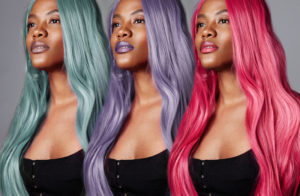 Hair! Mine has never been my best feature. I remember my younger years, spending countless hours trying to transform my own limp locks into a long and luscious Pantene-like mane. It didn’t work.
Hair! Mine has never been my best feature. I remember my younger years, spending countless hours trying to transform my own limp locks into a long and luscious Pantene-like mane. It didn’t work.
“Don’t Hate Me Because I’m Beautiful”
(Does anyone else remember the stunning Kelly LeBrock scolding you through the TV screen? “Don’t hate me because I’m beautiful,” she said as she showed us how her hair looked “in the morning.” She claimed—twice—to be “just like you.” That is until she washed her hair with Pantene https://www.youtube.com/watch?v=jssGyRoC-3w).
Unfortunately, no matter what I tried (egg yolks, coconut oil, yes … even Pantene), I could never grow my hair successfully. Even as a kid, it was always on the thin side. And the longer it got, the lankier it looked.
What is it about long, flowing tresses—or shorter, “smart” cuts—that get many of us seeing green, wishing that we, too, could be blessed with full, rich strands? Why do we spend so much time—and money—searching for or maintaining the hair look we desire?
Should I Go Grey?
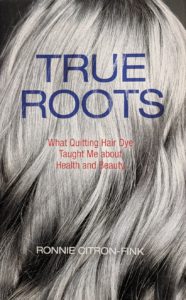 It’s complicated! We could go on forever about the meaning our hair has held over the course of our lives, but in today’s blog, I’d like to turn our attention to a more specific hair question, one with which many of us struggle: what to do about the grey!
It’s complicated! We could go on forever about the meaning our hair has held over the course of our lives, but in today’s blog, I’d like to turn our attention to a more specific hair question, one with which many of us struggle: what to do about the grey!
I’ve been thinking about this “struggle” for quite some time. When I saw Suzanne Bergerac Roth’s article in the New York Times last October, I cut it out and put it in my blog topics folder for future reference https://www.nytimes.com/2018/10/18/style/going-gray-how-i-quit-the-hairdye-bottle.html. When I read Ronnie Citron-Fink’s new book True Roots on a plane to LA last month, I decided that “future” is now https://www.ronniecitronfink.com.
First the Technical Stuff: Let’s Talk Health.
I think it’s safe to say that it’s a good idea to avoid putting chemicals onto our skin/scalp whenever we can. Yet, in our chemically-overloaded existence, we do have to pick and choose. The more we know about risks, the better decisions we can make. We could all agree with that one … right?
But when it comes to hair products, especially hair dye, our rational minds often take a back seat to our complicated yearnings—or to our unconscious routines. Coloring our hair has been such a normal part of our lives for so many years, that we don’t even consider any possible harm that such a regular practice can do. But coloring can do real damage.
I Did Some Research, and Here’s What I Found:
- Using hair dye can cause troubling dermatological reactions. That’s why manufacturers pack latex gloves into the boxes and suggest the consumer do a “patch test” before applying. Still, according to the poison.org website, “Even when hair dyes are used as directed, harmful health effects are possible. Up to 25 different ingredients in hair dyes can cause harmful skin effects” https://www.poison.org/articles/2016-sep/hair-dye.
O.K. If you’ve been using hair dye for ages and have had no bad skin reactions up until now, you’ve probably cleared this hurdle. But … did anyone else cringe when they read “25 chemicals…”? That’s a HUGE number! Just saying …
- About those chemicals … A 2015 research review “The Use of Personal Hair Dye and its Implications for Human Health,” published in Environmental International found that “Some of the chemicals used in hair dye products are reported to be carcinogenic in animals and … the International Agency for Research on Cancer (IARC) reported that some of the chemicals in hair dye are probably carcinogenic to those who are exposed to them occupationally (e.g., hairdressers and barbers).”
Those same hair stylists with whom many of us have developed such close relationships over the years—the ones who know most of our family secrets (or at least all of our hair secrets), the ones who also can tell, the second we walk into the salon, if we’ve “been unfaithful” and sat in 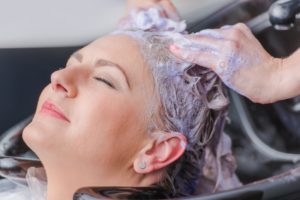 some other hairdresser’s chair. These women and men, whom we trust implicitly, are at risk—no joke!
some other hairdresser’s chair. These women and men, whom we trust implicitly, are at risk—no joke!
- “Styling hair is the equivalent of working in a chemistry lab,” according to Citron-Fink, who references this 2014 report from Women’s Voices from the Earth titled “Beauty and Its Beast” https://womensvoices.org/wp-content/uploads/2014/11/Beauty-and-Its-Beast.pdf. Citron-Fink states: “60% of salon workers who work with hair dyes, bleaches, and permanent wave solutions suffer from skin conditions … on Salon workers also tend to have higher rates of miscarriages, gestational diabetes, and babies with birth defects. And they have a greater risk of dying from neurological conditions including Alzheimer’s disease, presenile dementia, and motor neuron disease … Other studies have found that hairdressers were three times more likely to get breast cancer than women in other occupations and five times more likely to get bladder cancer than the general population.”
O.K. So being a stylist should be included in a “dangerous occupations” list—for sure.
- But what about consumers? What risks do we take when we color our hair? Unfortunately, we are not out of the woods, either. Rebecca Guenard in the article “Hair Dye: A History” published in 2015 in The Atlantic https://www.theatlantic.com/health/archive/2015/01/hair-dye-a-history/383934/ cites a 2001 University of Southern CA study that does not bear good news. Researchers found that “women who frequently dye their hair were twice as likely to develop bladder cancer as those who abstain.” And the darker the dye, the more dangerous the process. Many dark dyes contain para-phenylenediamine, a harmful substance derived from petroleum.
- What about natural hair dyes? Sorry my friends. I have no good news to offer there either. Many of the so-called natural dyes contain PPD “with” according to Citron-Fink, “a few extra botanical ingredients thrown in.”
- To be fair, Guenard also mentioned that “Scientists working for the industry continue to point out that no undisputed epidemiological studies show a significant risk of cancer among people who color their hair.”
Before, you get take too much comfort from this quote, though, take notice: “Scientists working for the industry … (my italics added).” When I read that, I see a giant red flag.
- One last important consequence to consider: the effect hair coloring has on our environment! All those chemicals—the ones that don’t make it through our scalps and into our bodies—go down the drain and into our waterways and oceans.
Coloring During the Pandemic
COVID19 has added an extra complication to the hair dying question. For people who aren’t yet ready to venture into the hair salon, Joan Clark, an editor at tipsbulletin, has some safe (nontoxic) tips for hair dying at home, in her article “How to Dye Your Hair.” You’ll find them under the sub-heading “Home Remedies.” Clark discusses Henna for color, and lemon juice, chamomile tea, and honey and coconut oil for hair lightening. She even provides her readers with recipes!
One extra fun (or kinda gross) suggestion is using Kool Aid for hair coloring. It’s a bit of a process—and you must make sure you use the unsweetened packages to avoid sticky strands—but, hey, looking for something to change things up for your next Zoom meeting? Maybe give it a try!
My Non-Scientific “Study”
 So … now we’re all armed with information. But somehow, I still think many of us will continue to color over our grey. But why?
So … now we’re all armed with information. But somehow, I still think many of us will continue to color over our grey. But why?
I decided to do my own (very) informal survey. I sent a group text to several of my friends and asked a few people in person what was behind their decisions “to color or not to color.”
Here’s what some of them had to say (Names have been changed to protect the innocent):
Susan: “Vanity…The pursuit of looking younger than my chronological age still matters to me. I realize, intellectually, it’s a shallow pursuit and admire people who are not so inclined. I may get there at another point in time. My mother and her siblings did.”
Debra: “Here are my feelings: I like looking in the mirror at someone that looks similar to me. Therefore, keeping my hair in a brown tone works for me…for now anyway. I may feel differently as time goes on, but for today this is my preference.”
Connie, who works in a school, is concerned about possible age discrimination: “I am working with many young people who are teachers and I don’t want any assumptions on their part.”
Three honest reflections on personal choice.
Mary’s response is honest as well and addresses how our partners may influence our coloring decisions: “I started turning grey at 25. I’m now considering letting in the grey for the first time ever. I asked my husband. My hair is all about him. When I have short hair, his face just drops. Our friend gradually became grey, and she looks great. My husband’s willing to try it. I will see it in his face.”
And then there’s Carol (my only friend who goes au naturel): “I have silver hair and love it. No longer have to worry about touch-ups. And what’s the big secret? We’re old. We’re supposed to have grey hair. It’s also a new fashion statement. Young people are trying to dye their hair silver. . . who are we trying to impress? Have you taken a look at the bald, big-bellied men out there?”
And then she added: “I have gotten more compliments since i went silver than I ever did as a blonde.”
So, Carol, pray tell … is there hope???
True Confessions
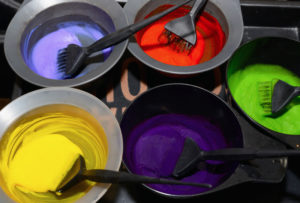 I have a confession to make. The question “to dye or not to dye” is not really a struggle for me. I don’t and have never had “a relationship” with a hairdresser. I find going into my local Super Cuts for a quickie too much time to waste. But I have colored my hair on several occasions.
I have a confession to make. The question “to dye or not to dye” is not really a struggle for me. I don’t and have never had “a relationship” with a hairdresser. I find going into my local Super Cuts for a quickie too much time to waste. But I have colored my hair on several occasions.
I remember my first time. I had been a 40-year-old virgin, but when I noticed a few stray greys beside my ears, I made an “appointment” with my dear friend Debra (yes, the same one I’m calling Debra above.) There we were in her bathroom, each of us armed with a box of Clairol’s Nice N Easy Light Ash Brown. Debra patiently showed me the ropes and even had me dye my eyebrows to match! (I never would have imagined!)
I liked the result. But I was way too lazy to keep up. I’ve since let the grey in, and I kinda like the way it looks. With 75% of American women coloring their hair, I know that I’m an anomaly. But a growing number of women are coming around and embracing their grey, wearing it as, what Suzanne Bergerac Roth describes, “a silver crown.”
Quitting the “Hair Dye Bottle”
Roth begins her article “How I Quit the Bottle (the Hair Dye Bottle)” with this: “As I sat in the colorist’s chair in a high-end salon, I could not help but admire how young I looked. My gray roots had just been obliterated with a $300 Chernobyl of Deep Chocolate Mocha and Buttery Caramel lowlights.
But I knew my hair high would be, as usual, a short-lived buzz. Within days, my mane would oxidize into Roadkill Orange, alluring as a badger pelt. And a telltale gray stripe would appear on my part, demarcating fact from fiction.”
Hmmm. Fact from fiction. I think she’s on to something here.
Doom and Gloom? Not Necessarily!
When Roth was considering growing grey, she was fed a lot of fiction by those around her who were leery of her choice:
- “You’ll be invisible and look like Grandma!”
- “You’ll torpedo your career!”
- Roth was even told that her husband would “dump” her for a “younger woman!”
Roth was also bombarded by beauty advice on social media:
- “Don’t attempt to grow out gray yourself — you must consult with your stylist!”
- “Gray hair drains color from your face! You need a bold new lipstick!”
Stand a Little Taller

Woman Embracing Her Grey
Surrounded at work by younger—much younger—coworkers, Roth asked herself who was she fooling by dyeing her hair and then realized that nobody at work cared at all about her hair color. If they didn’t, she asked herself, why should she?
Roth also started noticing how women who chose grey seemed to stand a little taller—maybe choosing not to color was a statement of their confidence.
When her hair returned to its natural grey, Roth discovered that none of the dire predictions came true. She also had another revelation: She “just felt pretty.”
Towards the end of her article, Roth imparts great wisdom couched in her delicious sense of humor: “A highly unscientific statistic I just made up shows that 83 percent of women over age 60 who go gray do not regret it. Turns out they are more preoccupied with making the most of their remaining, brief visit to this planet than with all the hoopla surrounding hair color.”
What’s Your Beauty Obsession?
Let’s face it. In our beauty and youth-obsessed culture, most of us have at least one preoccupation about our looks. I certainly have mine—my weight (definitely a topic for another blog—or 10!), so I am in no position to judge. I just wanted to open up the conversation, arm you with some data, and maybe provide some food for thought.
“Susan,” “Debra,” “Connie,” and “Mary,” if you choose to remain brunettes for the rest of your lives, I will still love you! I just want you to know that you would be gorgeous no matter the color of your hair.
As always, I’d love to hear your thoughts!
-
Where do you stand on the “grey/not grey” divide?
-
What is it you most fear you’ll lose if you lose the hair-dye bottle?
-
To those who have let their grey see the light of day, what has the experience been like for you?
-
And, finally, what’s your beauty obsession?
Please leave a comment or send me an email!
Have a wonderful week, everyone! See you next Friday!
Diane
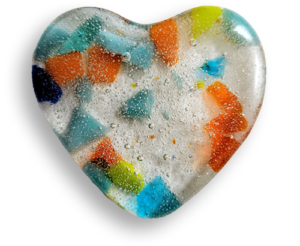
Maybe we feel that this is one aspect of our appearance that we have almost complete control over.
The use of personal hair dye and its implications for human health Ki-Hyun Kim a,⁎, Ehsanul Kabir b, Shamin Ara Jahan c
The use of personal hair dye and its implications for human health Ki-Hyun Kim a,⁎, Ehsanul Kabir b, Shamin Ara Jahan c
Environment International 89–90 (2016) 222–227
In a past blog about Growing Bolder, I talked about how much money is spent of “anti-aging” products. Roots book: “Yet fighting aging as if it were a disease is a losing battle. You can’t defeat time; you can only decide how to spend it.”
Don’t hate me because I’m beautiful
Because I’m worth it.
Feminists—empowerment
even if that number is not that large—still.


Thank you for this post, Diane. I’m glad I finally made time to read it. As always, you added immensely to my existing knowledge. Making non-toxic choices are often better for all stakeholders, and not just ourselves. I have an alopecia diagnosis, so I tell myself that I don’t want to be bald and grey. You’re absolutely right in your assessment that this is a complex issue. I do understand intellectually that my personality is more important than my appearance, and yet I want to be okay with what I see in the mirror. I’ve recently refrained from wearing lipstick as the norm, and that’s been liberating. I’ve been trying to gradually develop my internal locus of validation. As writer Maggie Nelson states in her book The Argonauts, we’re all ‘becoming,’ throughout our lives.
Love that Maggie Nelson, Sarita! We are all “becoming” throughout our lives!
Just had a chance to read this, Diane and LOVE it! I stopped coloring my hair ~ 15 years ago and am loving it. And as Roth (no relation!) says in her article, I get many more compliments than I did before… maybe just cuz people can’t believe I’m au natural and want to be supportive! I’m also lucky that I’ve “grayed” nicely — almost like I’ve naturally streaked my hair with multiple shades of brown, blond and gray all mixed together. Now I’m heading rapidly toward all gray, but it’s OK with them now. Thanks for a great article!
Thanks, so much Deborah, for your comment, and for sharing your color progression! I love to hear people’s going grey stories–so many different experiences. My hair also looks like I streaked it (and I get those same supportive comments–lol)!
Hi Diane,
I cringe when I remember as a twenty-five year old enduring a tight rubber cap put on my head and sharp hooks poked through the cap to pull out strands of hair for light highlights.
It was so painful! But I had to be beautiful with frosted hair!
A few years later I started to go gray so I had my own highlights. But that wasn’t the same! So for maybe six months, I colored my hair. I should say I had my hair colored as I wasn’t brave enough to do it on my own. I remember the horror I felt, probably of the shame variety, when the gray roots started to show which they did very rapidly as my hair grows fast.
I quickly decided that my time, money, and health were dictating I stop this foolishness and I went gray. It was a bit traumatic! I am lucky that my gray is kind of a silver tone and people comment on how beautiful it is frequently. I feel so lucky! And since it’s turned gray it has become curlier. So it is easy to wash and toss.
I wish I could have been smart enough to wait for my own frosting! Fun to recall my younger vanity which I wish I could say was totally gone. It is different to feel invisible to some younger clerks. I woke up a clerk recently when I was buying a gift for my friend who was turning 60. The young woman confided that her husband was turning 30 soon and she didn’t know what to buy him for a present. I proudly said that my son was turning 50 on the 4th of July! It felt daring to admit that!
My always thick hair is thinning so I will have another chance to work with my attitudes & vanity about hair! Always a challenge but always a gift! I am still living!
Hi Nicky! I love those stories! Happy belated bday to your son-I hope 50 is the start of wonderful decade for him!
And, yay, for challenging gifts–and for living!!
What a great article about a subject we all have to deal with eventually. I enjoyed reading Carol’s comment!
Thanks, Janet! I enjoyed Carol’s comment too–she’s very funny!
Great topic! Having worked for L’Oreal for 25 years, with many of those years in the professional salon products division, this is a subject close to me. Despite my “healthy” choices for organic food, a pesticide-free yard, and non-chemical home cleaning products, I still choose to color my hair. I’ve been indoctrinated into the culture of pursuing youth and beauty for too long to change. I rationalize the risks by going every 9 weeks instead of 4 or 5 for a touch-up. I experienced “invisibility” during my dowdy days and did not enjoy it. As a 60 year old with an 18 year-old son, I still want to look like “mom” and not “grandma”. Just me, but I applaud woman who have the confidence to let nature take its course.
Wow, Denise! 25 years working for L’Oreal! I imagine that you have many stories to share! I totally get your choice and LOVE how you put this: “As a 60 year old with an 18 year-old son, I still want to look like ‘mom’ and not ‘grandma.'” I think we all make tough choices when it comes to the pull between health and beauty/convenience/invisibility. (Invisibility is a particularly tough one and one I can definitely relate to!) Thanks so much for sharing your perspective!